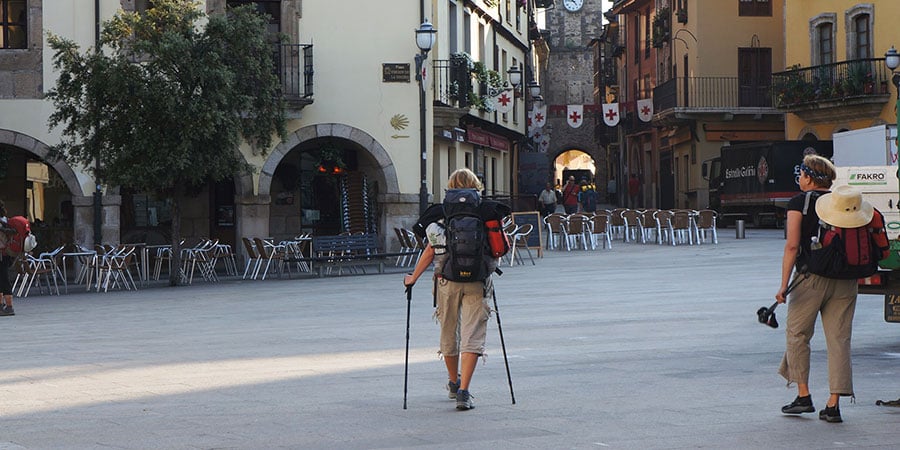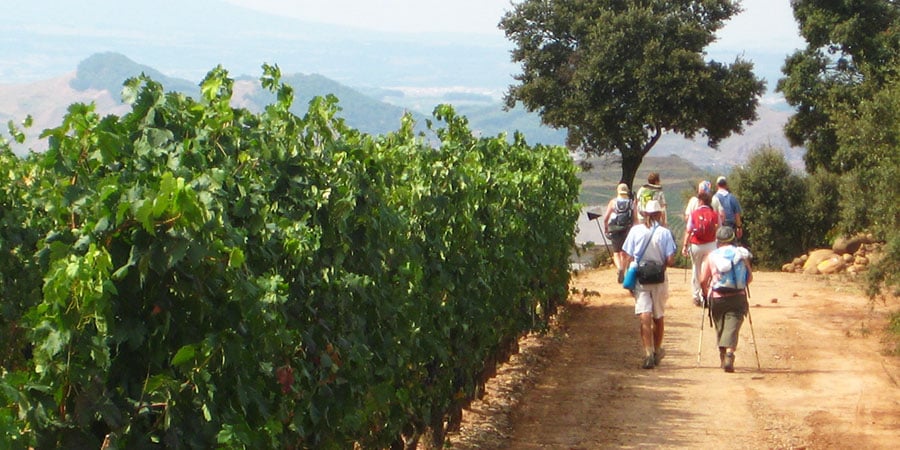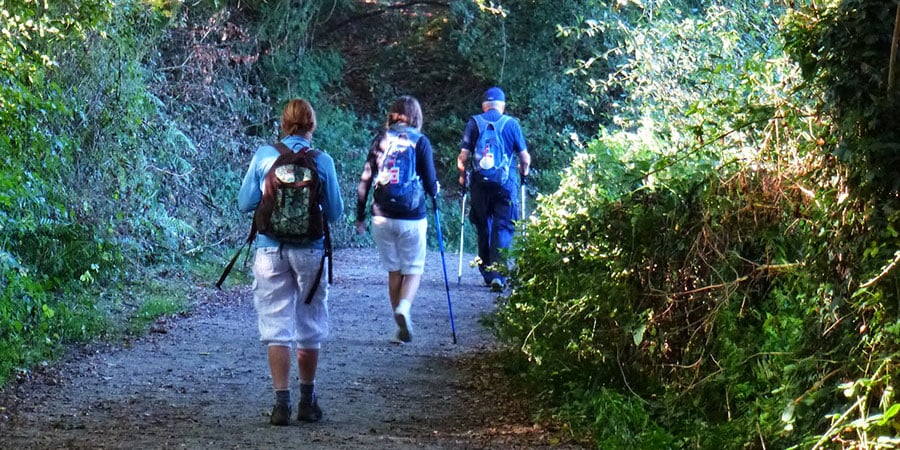What are walking poles, and why should I use them?
Often considered an essential accessory for long-distance trekking or walking, walking poles can be a valuable item to add to your Camino packing checklist. On the Camino de Santiago, walking poles are tools used by pilgrims to aid in balance, reduce strain on the legs and knees, and enhance walking efficiency during their journey. If you are planning a long-distance walk of any kind, walking poles will help keep your arms moving forward.
What are the benefits of walking poles on the Camino?
Walking poles can assist you in many ways but there are a few main advantages, including leaning on the poles, which can help to increase the speed of your walk, reduce the impact on your legs and support your knees. In addition to the physical benefits for your body, they can also assist with your grip on the terrain, especially with keeping your balance when you encounter slippery surfaces or muddy paths.
*Be careful when buying new walking poles. It is essential to select the right type of poles. For example, foldable poles are great if you plan to travel with them.
Improved stability
Walking poles can help improve stability, especially on uneven or slippery terrain. The poles provide an extra point of contact with the ground, which can help to reduce the risk of falls or accidents. They can also help distribute weight more evenly across the body, which can be especially helpful for people carrying heavy packs.
Reduced impact on joints
Walking poles can help to reduce the impact on joints, particularly the knees and ankles. When walking, the body’s weight is transmitted through the joints, which can lead to wear and tear over time. Using walking poles, some of the weight can be transferred to the arms, which can help alleviate pressure on the joints. This can be especially helpful for people with joint pain or recovering from an injury.
Increased upper body strength
Using walking poles can also help to increase upper body strength. The arms and shoulders have to work to support the body’s weight and to propel the walker forward, which can help to build muscle and improve overall strength and endurance.

How do I choose the best walking poles?
The first thing to consider when choosing the type of walking poles you need is the kind of terrain that you are planning to walk. Our Camino travel team can advise you on the various terrains that you will pass over on the Camino routes.
Nordic Walking Poles: are generally used for flatter terrain and rolling hills.
Trekking Walking Poles: will help you to balance on more mountainous climbs and varied gradients.
Where can I buy walking poles?
When looking to purchase walking poles, you can find assistance at any outdoor gear store. Experts can help you select the appropriate set. Remember, for longer walks like the Camino de Santiago, opting for lighter poles is beneficial. Alternatively, you can buy walking poles at the starting point of your journey. They are readily available in most medium-sized towns and cities along the Camino. Especially on popular routes like the Camino Francés and other well-traveled paths.
*Be aware if you plan on starting your journey early in the morning, it’s unlikely that these shops will be open.
Should I use walking poles?
Not all walkers require the assistance of poles to keep them comfortable on the trail. They can be useful but also annoying if you don’t need them. If you start to use them for your long-distance walks, stick with them for a few walks before you decide that they are not for you.
If you are still finding them uncomfortable after a few long treks then you may be better off without them. Remember that when you use walking poles you won’t have free hands. That may mean adding an extra few minutes to your journey to read your maps and notes, eat your snacks and stop to take a drink of water.
Two of the key benefits of using poles are that they can reduce back strain and overall fatigue. We often hear that walkers find them most useful for assistance when climbing up and getting down steep hills. Using two poles on the Camino de Santiago can reduce the impact on your knees and ankles. It will also allow you to have a steady grip on the surface. You can use the pole for balance, endurance, and preserving energy.

Bringing your walking poles on the Camino
Check the luggage guidelines with your airline if you intend to carry your walking poles on the Camino de Santiago. They can often be considered extra sporting luggage and you may be charged for bringing them with you.
If you are buying walking poles for the Camino and you are travelling from afar, it would be a good idea to buy a foldable pair that will fit in your suitcase. Not every pilgrim needs to have walking poles and may find comfort in picking up sticks for some support along the way.

Top Tips:
- Your body needs time to get used to using the poles, so practice regularly and don’t worry if you feel you are using too much energy at the start.
- Get the right length for your height and test the handles to make sure they are comfortable for your grip.
- When travelling with walking poles, ensure that they are foldable (most Leki poles can be folded down).
- Any outdoor adventure shop will help you choose the right set of poles. A good rule to remember is the longer that your walk is, the lighter your poles should be.
- When walking uphill keep the poles close to your body and shorten the poles if you need a better grip.
- Avoid big steps, short strides work better when using walking poles.
We also have a Camino Packing eBook that is free to download and might help you with your planning. If you have any travel tips you’d like to share, we are always happy to hear from Camino walkers.
For more information about our Camino de Santiago routes or to book your own Camino adventure, please don’t hesitate to contact us.



